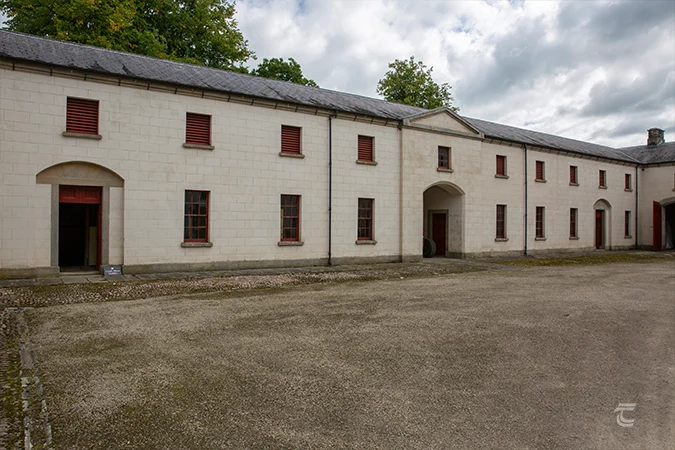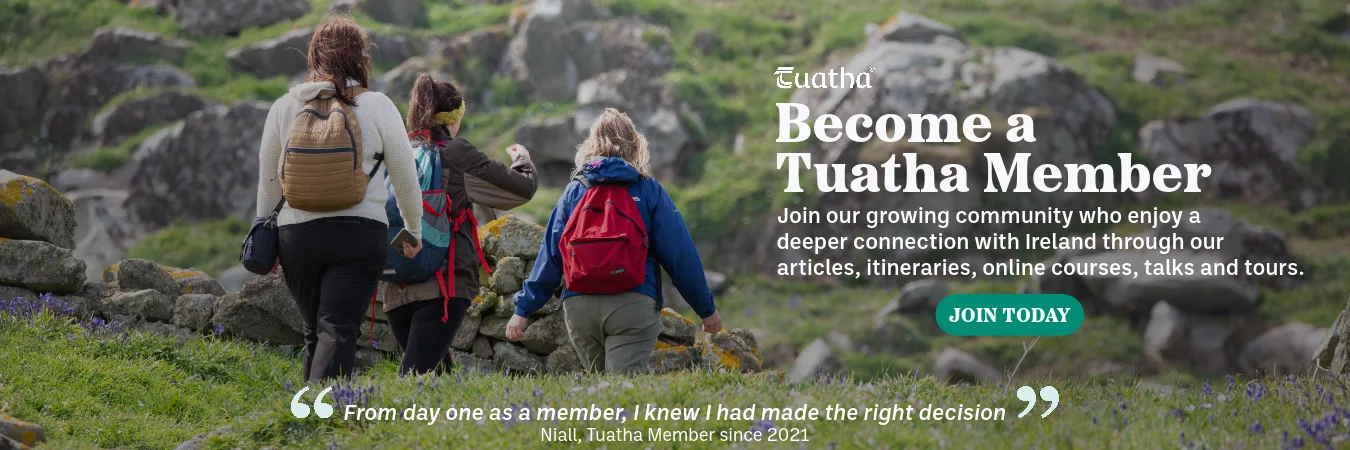Castle Coole
Set within a beautifully managed landscaped parkland, Castle Coole is one of the finest of the grand neo-classical houses in Ireland. It was constructed for Armar Lowry-Corry the 1st Earl of Belmore, between 1789–1797. He was a member of the Irish House of Commons for County Tyrone, before being made a peer, eventually reaching the rank of Earl in 1797. On his father’s death in 1774, Armar Lowry-Corry inherited a 1200 acre picturesque estate of old oak woods and small lakes on the outskirts of Enniskillen. There were a number of older residences on the estate, including a Queen Anne-style house that was built in 1707. However, Lowry-Corry wanted to create a grand impression to match his political ambitions.
Castle Coole was initially constructed as a summer residence at a cost of £57,000, (equivalent to around €25-30 million today). The architect James Wyatt followed the style of neo-classical architecture, ensuring the building was perfectly symmetrical, with restrained elegance and tasteful flourishes, with an Ionic style portico flanked by Doric colonnaded wings. He used the distinctive portland stone for the facade. The interior decoration was a opulent statement of the wealth and taste of the owners. With a double-return cantilever staircase, gilded furniture, rich textiles, and delicate plasterwork by Joseph Rose. Though over time, each generation has added their own stamp to the interior, providing a visual timeline of the changing taste of the family. You can view some of Castle Coole’s furniture and artworks on the National Trust website.
For practical information about visiting this site Click Here

The ‘palace in the park’ Castle Coole • Fermanagh
Exploring the grounds of Castle Coole – a palace in the park

A view down the servant’s tunnel • Castle Coole
A tour of Castle Coole also gives a view of life below stairs, for the butlers, servants, cooks and staff that kept an expansive estate like this running. At its peak, there were around 90 staff serving the house. There are tours that lead you through the extensive basements, where you can find the kitchens, wine cellar and servant’s hall, and the service tunnel where goods and staff were discretely brought to and from the house without disturbing the view. The interior of Castle Coole is accessible by tour only, though the beautiful grounds are well worth exploring in their own right.
Today Castle Coole is surrounded by 422 acres of parkland. This was once the core of a 70,000 acre estate that formed the demesne of the Lowry-Corry family. The grounds reflect the ‘managed nature’ style, that was made so fashionable by figures like Capability Brown. The use of ha-ha ditches controlled the estate livestock while ensuring the vista was expansive, without the need for extensive fences to break the view. The estate was planted with native oak, beech and ash, making it a lovely place to walk. Especially in the autumnal months.
In 1780 the 1st Earl Armar Lowry-Corry had walled gardens built, complete with heated greenhouses to grow melons, cherries and grapes for Castle Coole’s kitchens. He also added an ice-house and a pump house along with new gate lodges around the perimeter of the estate. Some of the estate buildings have found a new role, for example the tallow house once used for candle making, is now the gift shop and reception area.
The 2nd Earl, Somerset Lowry-Corry, followed in his father’s footsteps in ensuring Castle Coole kept up with the latest fashions, and he travelled extensively in Italy, Syria and Egypt. It was the second earl who had the impressive Grand Yard constructed. Though Lowry-Corry’s political career took a turn for the worse shortly after it was constructed. He had been strongly opposed to the Act of Union, and following its passing in 1801, he moved his family from their primary residence in Dublin to live at Castle Coole year round.

A view down the servant’s tunnel • Castle Coole
He became the Governor of Jamaica in 1828, and he was there when the Baptist War (also known as the Great Jamaican Slave Revolt or the Sam Sharp Rebellion) took place in 1831. Led by the black Baptist preacher Samuel Sharpe, the enslaved workers demanded more freedom and a working wage equivalent to half of what white workers were paid. From a peaceful work stoppage, the rebellion grew in size and violence, and involved approximately 60,000 of the 300,000 slaves in Jamaica. The rebellion was brutally put down, with an estimated 500 killed in clashes with the militia or by execution afterwards. The aftermath served as a catalyst for emancipation. Parliament passed the Slavery Abolition Act 1833 for initial measures to begin in 1834, followed by partial emancipation (outright for children six or under, six years’ apprenticeship for the rest) in 1834 and then unconditional emancipation of chattel slavery in 1838.
In 1951 the 7th Earl Belmore transferred the mansion to the custodianship of the National Trust. Though the Earl retains ownership of the contents of the house and the use of an apartment within a wing of the mansion, as well as a house on the estate. Today the National Trust opens the mansion to visitors during the summer months, and the estate can be visited year-round. It is a beautiful place for a family walk.
Upper left: the path to Castle Coole • Lower left: the Grand Yard • Right: one of the lovely woodland walks
Top: the path to Castle Coole • Middle: one of the lovely woodland walks • Bottom: the Grand Yard
Castle Coole Visitor Information
Set within a beautifully managed landscaped parkland, Castle Coole is one of the finest of the grand neo-classical houses in Ireland.
Explore more sites in Northern Ireland




